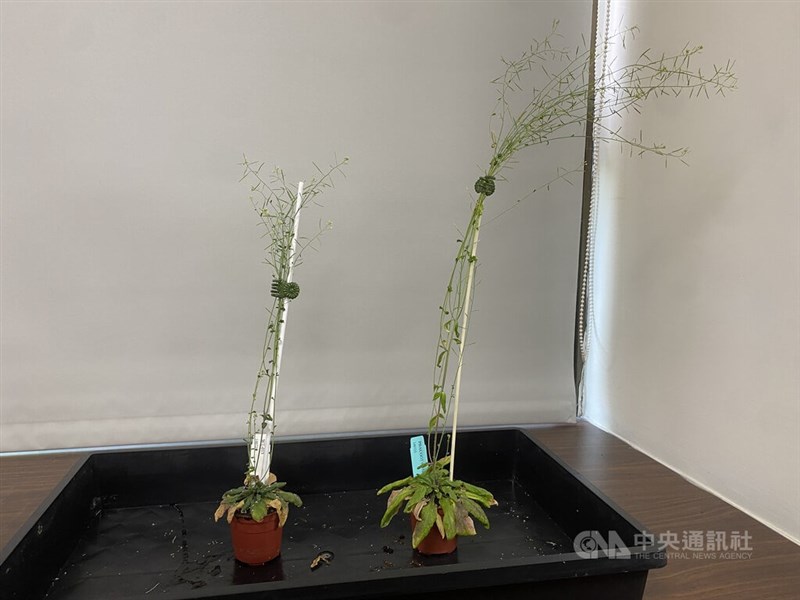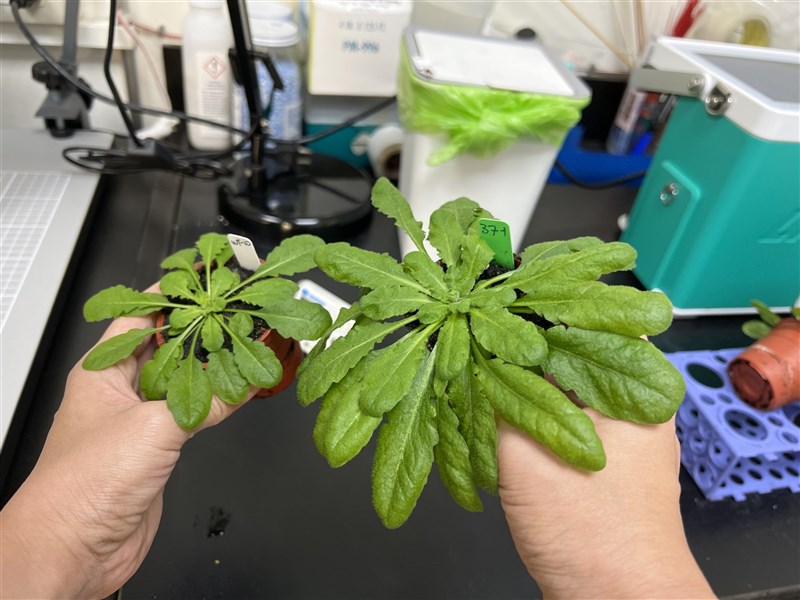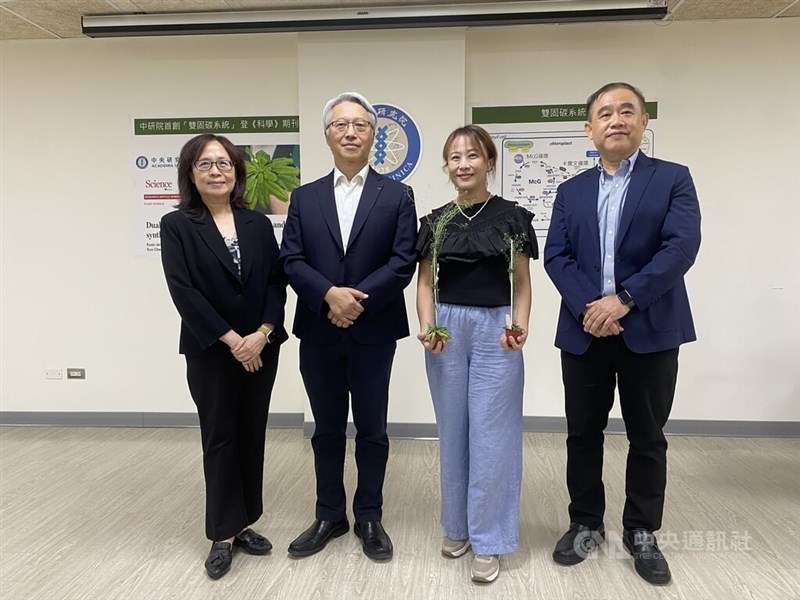Taiwan develops gene-edited plants that capture more CO₂, grow faster

Taipei, Oct. 1 (CNA) Taiwanese scientists have engineered plants that can capture around 50 percent more carbon dioxide (CO₂) and produce more than twice as many seeds as unmodified plants, a breakthrough they hope could one day help mitigate global warming and grow more staples such as rice.
If applied to major food crops, the new system introduced into plant cells could cut CO₂ emissions and raise yields "without adding equipment or labor costs," Lu Kuan-jen (呂冠箴), a researcher at Academia Sinica, told CNA, referring to the September study.
Rising CO₂ emissions have disrupted the balance of the carbon cycle, which moves carbon between the air, land, oceans and living things, prompting scientists to explore ways to make crops more efficient in capturing CO₂.
Enhancing carbon capture
"Human-made CO₂ emissions since the Industrial Revolution have disrupted the balance [of the natural carbon cycle]," Academia Sinica President James Liao (廖俊智) said at a Sept. 16 event presenting the team's findings.
Citing annual human emissions of 9.6 billion tons of CO₂ compared with the 220 billion tons absorbed through photosynthesis on land and in the oceans, Liao said his research has focused on enhancing photosynthesis -- the process by which plants convert light, water and CO₂ into oxygen and sugars.
"We aim to artificially design a new carbon-fixation system to enhance the efficiency of photosynthesis-based CO₂ capture," Liao said.
About 20 years ago, Liao's team began research that led to introducing a synthetic biochemical system into thale cress (Arabidopsis thaliana), a fast-growing plant, through gene transformation.
Tests showed that the added system boosted CO₂ uptake in thale cress by about 50 percent compared with unmodified plants.

"Magic plants" boost food, oil
Lu, a lead author of the study published in early September in the journal Science, called the gene-edited plants "magic plants" because they grow faster than wild-type plants.
She said the plants run a second carbon-fixation system alongside the natural one, making them the first with two such systems and increasing lipid production in their leaves and seeds.
The modified plants "doubled or tripled their biomass and increased both the number of seeds and oil production," Lu told CNA.
She added that the advancement could help meet future food supply challenges for crops like rice and corn while also providing a sustainable feedstock for aviation fuel and chemical industries.
Practical hurdles ahead
Researchers cautioned that plant species vary in how they regulate growth, making it difficult to estimate how much additional CO₂ could be captured if the system is applied to future crops.
Nonetheless, Lu pointed out that a modest 10 percent increase in carbon fixation across crops could exceed the amount of carbon emitted by human activity.
She said the system could be applied to leafy vegetables, such as broccoli, or to grains like rice and wheat to enhance yields and bolster global food security.
Academia Sinica has assembled a team to advance the research, with the next phase focusing on testing the system in major crops, including rice and tomatoes, Agricultural Biotechnology Research Center Director Yeh Kuo-chen (葉國楨) said.

While the study marks a significant scientific advance, Liao cautioned that commercial applications remain distant.
"We are not looking at next year - or even the next decade," he said, citing the need to ensure genetic stability and meet regulatory standards for genetically modified crops.
- Politics
KMT's Tainan mayoral nominee waves 'prop handgun' during rally
12/25/2025 08:23 PM - Cross-Strait
Taiwan patrol vessels monitor Chinese coast guard in Kinmen waters
12/25/2025 07:57 PM - Society
Taoyuan airport's Terminal 3 north concourse to ease peak-hour congestion
12/25/2025 06:50 PM - Society
Taipei Zoo celebrates Christmas with gifts for animal residents
12/25/2025 05:06 PM - Politics
Echoing Trump, KMT, TPP propose 'Taiwan Future Accounts' for children
12/25/2025 04:48 PM